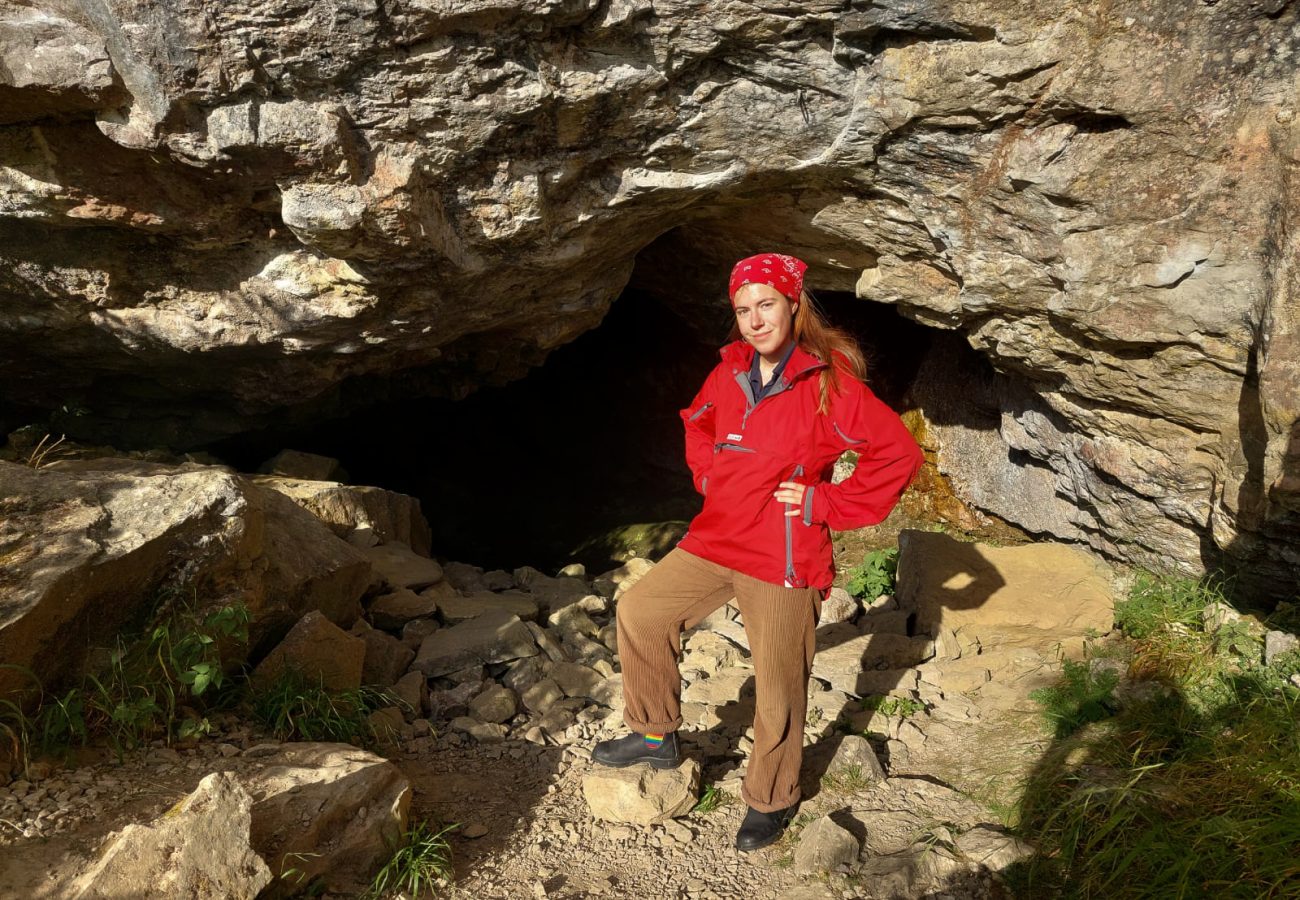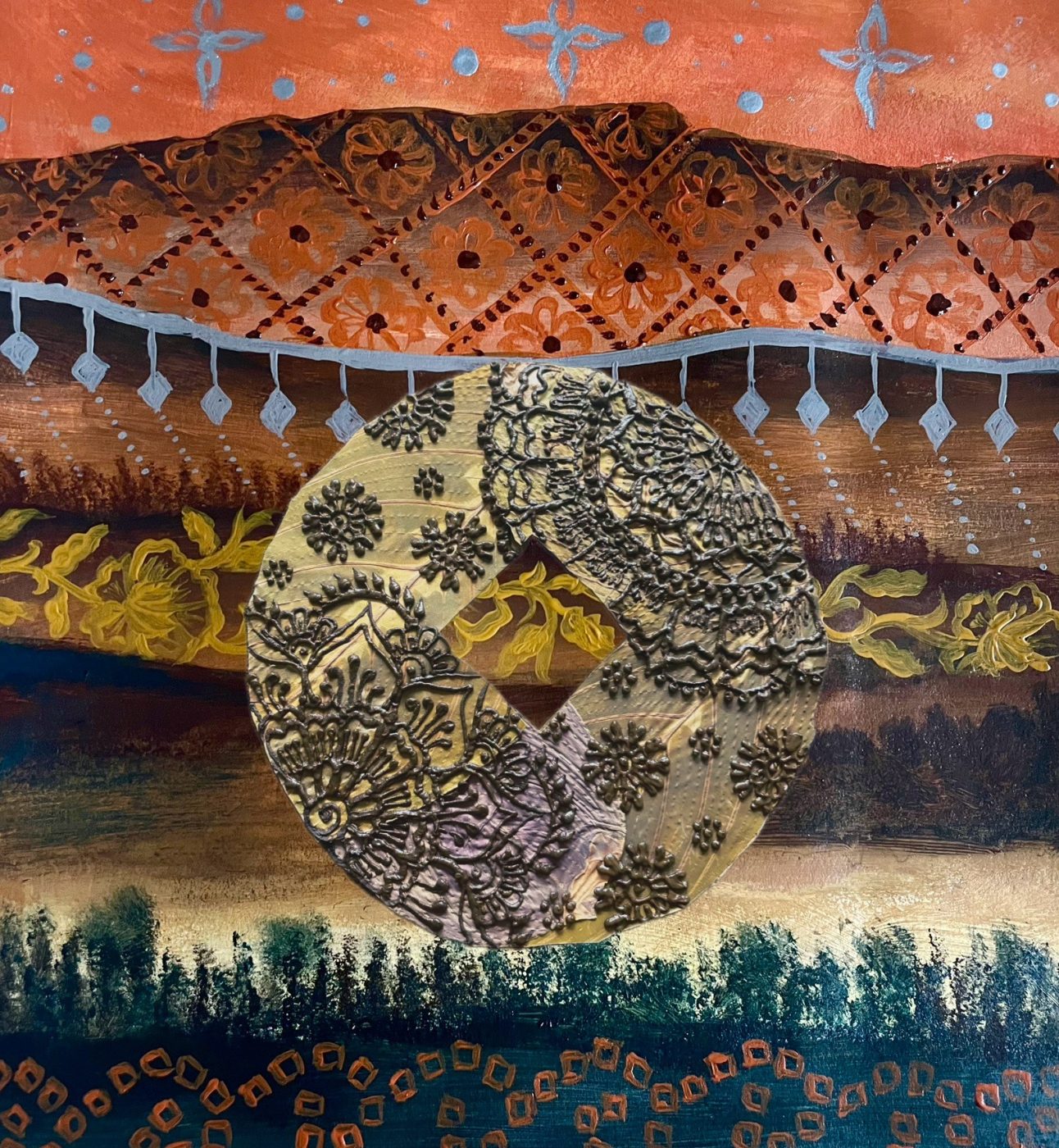
Be the first to receive Viewpoint
Our Friends receive Viewpoint 6 months before it's available to the public, become a Friend today.
Published: 6 November 2024
I once claimed that I didn’t believe in ghosts. Until one evening, wandering through an old forest on the side of Ingleborough, I began to doubt myself. The trees were gnarled, their trunks twisted and branches weighed down by mossy cloaks. Raindrops glistened on their leaves and cobwebs shimmered in the gaps between, the deep green canopy embroidered with silver. As I stood and listened to their boughs creaking like old bones in the wind, I saw it: a pair of amber eyes. A shadow flitting between trees. A ghost of the past and a dream for the future. When I blinked, it vanished. Only absence remained.
~
With amber eyes, a white belly and black-tufted ears, the Eurasian lynx is a majestic wildcat that once frequented the Yorkshire Dales. The term ‘lynx’ is thought to derive from the Proto-Indo-European ‘lewk-’ meaning ‘light’ or ‘bright’, potentially relating to the way the reflective eyes of lynx shine in the dark. For a long time, lynx were believed to have become extinct in Britain 5,000 years ago. However, in the early 2000s a lynx femur from Kinsey Cave in the Yorkshire Dales National Park was radiocarbon dated to the 6th century. The specimen is the most recent evidence of lynx in Britain, and its discovery suggests that hunting and habitat destruction in the form of deforestation drove lynx to extinction, rather than climatic shifts as previously thought. While it is exciting to know that lynx persevered in England at least until the early medieval period, it is devastating to know that their extinction occurred as a direct result of human interference.
The initial paper exploring the Yorkshire Dales lynx discoveries highlighted the potential for the evidence to support a stronger case for the reintroduction of lynx to northern England. By combining this archaeological evidence with the latest research on lynx behaviour, the case for lynx reintroduction is strengthened further. In caring for our National Parks, we have a responsibility to right the wrongs of the past. Helping lynx return to the Yorkshire Dales, alongside a large area of northern England, would be one way of doing that.
Lynx are solitary animals who hunt nocturnally, stalking and pouncing their prey, and are especially fond of roe deer who share their woodland habitat. The Missing Lynx project has recently used computer modelling techniques to explore the ecological feasibility of reintroducing lynx to different areas of Britain. They found that lynx could form a ‘healthy population covering north-west Northumberland, the edge of Cumbria and the bordering areas of southern Scotland’ but not in ‘other areas of England and Wales’, on the basis that there is not enough forest cover elsewhere. Although the Yorkshire Dales has been stripped of its forest cover over centuries and is presently an unsuitable habitat for lynx, extensive tree planting efforts mean that the landscape is rapidly changing. In the future, the National Park may once again have enough tree cover to support lynx reintroduction.
Lynx require an extensive area range with good habitat connectivity. The Scottish Borders, Northumberland and Cumbria have already been identified as suitable locations for lynx reintroduction. Expanding this area to include the North Pennines Natural Landscape (where large tree planting efforts are also underway) and Yorkshire Dales National Park could enable lynx to return to a much larger portion of northern England.
Although landscape suitability for lynx is primarily defined by forest cover and area range, the qualities of an ideal lynx habitat are far more nuanced. A recent study on habitat selection by Eurasian lynx has highlighted the significance of rocky features that are typical of limestone landscapes like the Yorkshire Dales. The study found that lynx preferred to rest near features such as caves and crags during the day, and that these features support lynx hunting at night. In addition to assisting lynx in ambushing their prey, rocks are scent-marked by lynx to mark territory. The Dales are well-known for their geological features, from rippling plateaus of limestone pavement to huge caverns beneath the hills. Such features have been proven to aid lynx populations elsewhere in Europe, such as in the Dinaric Alps where lynx were recently introduced. Archaeological evidence already demonstrates that caves were once frequented by lynx in the Dales. Perhaps in the future, they might be again.
Reintroducing lynx to the Dales could bring further ecological benefits. In the absence of an apex predator, deer numbers have escalated to unsustainable levels, which are hindering tree planting efforts due to browsing. Lynx could be taken into consideration in deer management plans, as they are in Slovenia, and reducing deer numbers would allow our forests to naturally regenerate.
At present, the landscape of the Dales is not ready for lynx to return. It is, however, getting closer to being ready with every passing year. In wildlife conservation, short-term goals (such as planting trees in a field or rewiggling a river) are necessary for staying focused, but long-term goals are important for achieving an overall vision. Both archaeological evidence and research on lynx behaviour demonstrate why lynx reintroduction should factor into our long-term vision for the Yorkshire Dales – the home of the last (known) lynx. Even if it is not possible for that vision to manifest right now, it provides a snapshot of what we could achieve in the future – if we dare to dream.


Aila is a conservationist, climate activist and outdoor writer based in the Yorkshire Dales. Since founding the UK climate strikes and UK Student Climate Network in 2019, she has expanded her passion for protecting the planet to work in woodland conservation and help restore the uplands of northern England to a wilder, more biodiverse state. With degrees in literature and history, her writing focuses on the intersection between humans and nature, inspired by the mountains and caves that she loves so dearly.

Our Friends receive Viewpoint 6 months before it's available to the public, become a Friend today.

We offer grants to young people who want to develop their communication and storytelling skills and share their stories of National Parks.

This special edition of Viewpoint is made up entirely of contributions from young people. Thank you to lottery players for making this issue possible.